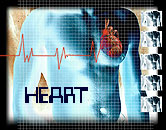
Overall, 58.2 percent of angiographic studies classified as appropriate for suspected IHD
WEDNESDAY, March 11, 2015 (HealthDay News) — More than half of coronary angiographic studies done to investigate suspected ischemic heart disease (IHD) would be classified as appropriate according to the 2012 appropriate use criteria for diagnostic catheterization (AUC). The findings were published in the March 10 issue of the Annals of Internal Medicine.
Michael M. Mohareb, M.D., from the University of Toronto, and colleagues validated the 2012 AUC in patients with suspected stable IHD. Data were included from a registry of patients having elective angiography at 18 hospitals in Ontario, Canada, between Oct. 1, 2008, and Sept. 30, 2011. Data were included for a final cohort of 48,336 patients.
The researchers found that among the cohort, 58.2, 10.8, and 31.0 percent of angiographic studies were classified as appropriate, inappropriate, and uncertain, respectively. Within the cohort, 45.5 percent of patients had obstructive coronary artery disease (CAD). Among those with appropriate indications for angiography, 52.9 percent had obstructive CAD and 40.0 percent underwent revascularization, compared with 30.9 and 18.9 percent, respectively, for those with inappropriate indications, and 36.7 and 25.9 percent, respectively, for those with uncertain indications. More patients with appropriate indications had obstructive CAD and underwent revascularization (P < 0.001). A considerable proportion of those with inappropriate or uncertain indications had important coronary disease.
“Despite the association between appropriateness category and obstructive CAD, this study raises concerns about the ability of the AUC to guide clinical decision-making,” the authors write.
Full Text (subscription or payment may be required)
Editorial (subscription or payment may be required)
Copyright © 2015 HealthDay. All rights reserved.







